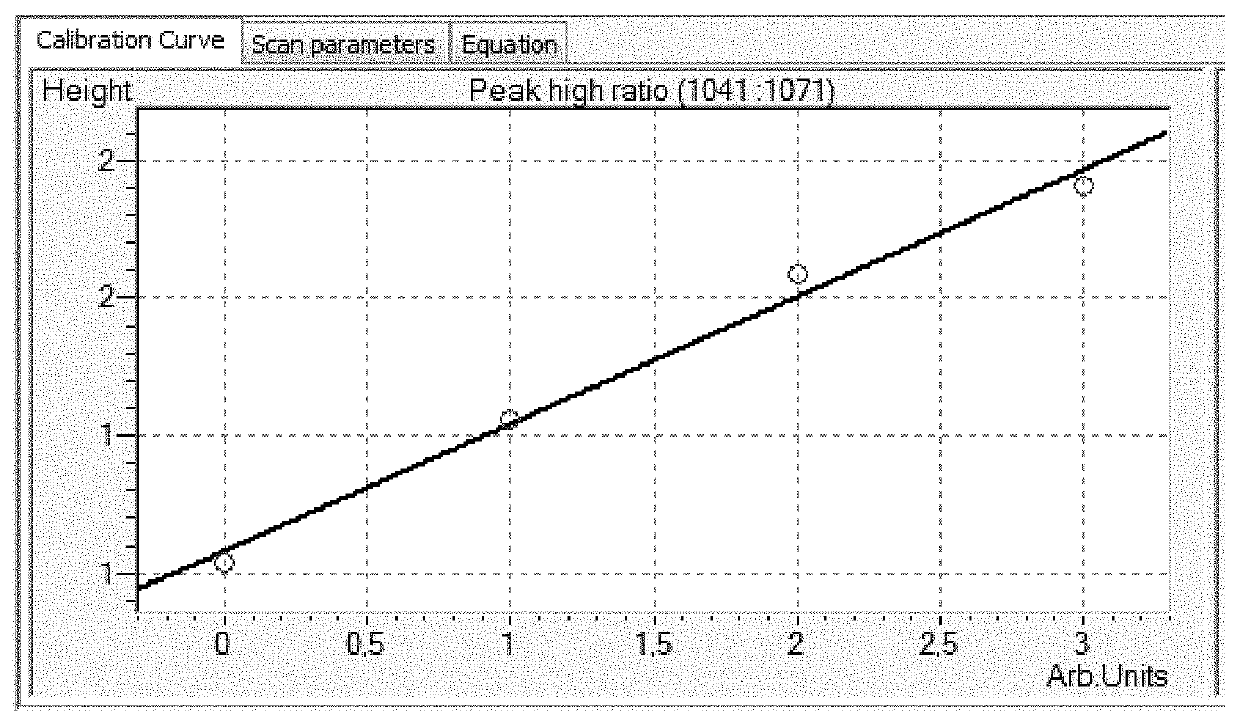Method for coloring or bleaching hair fibers
a hair fiber and dyeing technology, applied in the field of dyeing or bleaching hair fibers, can solve the problems of hair color fading, a widespread problem, frequent complaint by consumers, and severe hair damage, and achieve the effect of reducing and increasing the damage of the hair fiber
- Summary
- Abstract
- Description
- Claims
- Application Information
AI Technical Summary
Benefits of technology
Problems solved by technology
Method used
Image
Examples
example 1
of GDL with Ethanolamine in Water
[0083]6.16 g ethanolamine (EA), 15 g water and 17.9 g L-gluconic acid delta-lactone were sequentially added into a 3-neck flask to form a mixture. Under nitrogen, the mixture was gradually heated to about 60° C. and kept at that temperature for about 2.5 hours. Then, the temperature was decreased to 50° C. and the formed end product was poured into a container. Once the temperature was lowered to room temperature (˜21-23° C.), the end product was obtained.
example 2
of GDL with 3-Amino-1-propanol in Water
[0084]50 g water, ⅓ of the 35.6 g L-gluconic acid delta-lactone (lactone) and 15.0 g 3-amino-1-propanol (APA) were sequentially added into a 3-neck flask to form a mixture. Then the rest of the lactone was added into the mixture. Under nitrogen, the mixture was gradually heated to about 75° C. and kept at that temperature for about 1.0 hour. Then, the temperature was decreased to 50° C. and the formed end product was poured into a container. Once the temperature was lowered to room temperature (˜21-23° C.), the end product was obtained.
example 3
of GDL with 3-Amino-1-propanol in Methanol
[0085]5.0 g (0.2 moles) 3-amino-1-propanol, 200 g methanol and 35.6 g (0.2 moles) L-gluconic acid delta-lactone (GDL) were sequentially added into a 3-neck flask. The mixture was gradually heated under nitrogen to reflux at 60° C. and kept at that temperature for about 2.5 hours. The reaction was allowed to cool to ambient temperature (˜21-23° C.). The reaction mixture was filtered and the product was dried in a ventilated oven at 60° C. to give a gluconamide as a white powder.
PUM
| Property | Measurement | Unit |
|---|---|---|
| temperature | aaaaa | aaaaa |
| pKa | aaaaa | aaaaa |
| pKa | aaaaa | aaaaa |
Abstract
Description
Claims
Application Information
 Login to View More
Login to View More - R&D
- Intellectual Property
- Life Sciences
- Materials
- Tech Scout
- Unparalleled Data Quality
- Higher Quality Content
- 60% Fewer Hallucinations
Browse by: Latest US Patents, China's latest patents, Technical Efficacy Thesaurus, Application Domain, Technology Topic, Popular Technical Reports.
© 2025 PatSnap. All rights reserved.Legal|Privacy policy|Modern Slavery Act Transparency Statement|Sitemap|About US| Contact US: help@patsnap.com



